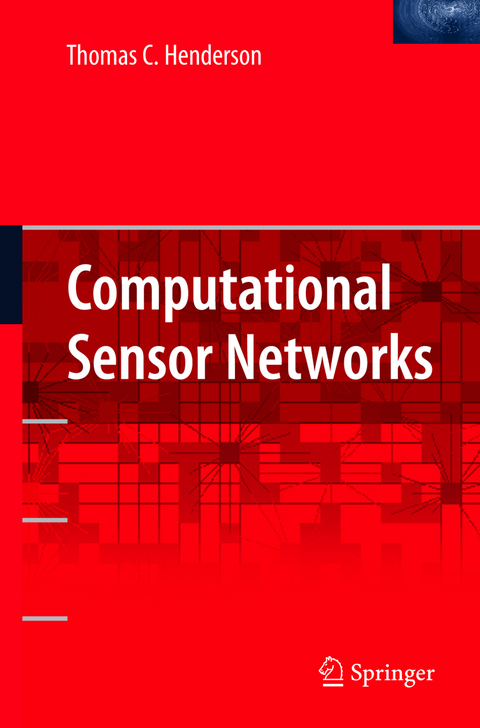
Computational Sensor Networks
Seiten
2010
|
Softcover reprint of hardcover 1st ed. 2009
Springer-Verlag New York Inc.
978-1-4419-3501-4 (ISBN)
Springer-Verlag New York Inc.
978-1-4419-3501-4 (ISBN)
A model-based approach to the design and implementation of Computational Sensor Networks (CSNs) is proposed. The three major components of this approach include (1) models of phenomena to be monitored, (2) models of sensors and actuators, and (3) models of the sensor network computation.
A model-based approach to the design and implementation of Computational Sensor Networks (CSNs) is proposed. This high-level paradigm for the development and application of sensor device networks provides a strong scientific computing foundation, as well as the basis for robust software engineering practice. The three major components of this approach include (1) models of phenomena to be monitored, (2) models of sensors and actuators, and (3) models of the sensor network computation. We propose guiding principles to identify the state or structure of the phenomenon being sensed, or of the sensor network itself. This is called computational modeling. These methods are then incorporated into the operational system of the sensor network and adapted to system performance requirements to produce a mapping of the computation onto the system architecture. This is called real-time computational mapping and allows modification of system parameters according to real-time performance measures. This book deals with the development of a mathematical and modular software development framework to achieve computational sensor networks.
A model-based approach to the design and implementation of Computational Sensor Networks (CSNs) is proposed. This high-level paradigm for the development and application of sensor device networks provides a strong scientific computing foundation, as well as the basis for robust software engineering practice. The three major components of this approach include (1) models of phenomena to be monitored, (2) models of sensors and actuators, and (3) models of the sensor network computation. We propose guiding principles to identify the state or structure of the phenomenon being sensed, or of the sensor network itself. This is called computational modeling. These methods are then incorporated into the operational system of the sensor network and adapted to system performance requirements to produce a mapping of the computation onto the system architecture. This is called real-time computational mapping and allows modification of system parameters according to real-time performance measures. This book deals with the development of a mathematical and modular software development framework to achieve computational sensor networks.
CSN: Overview of Approach.- Leadership Algorithms.- Coordinate Frames and Gradient Calculation.- Pattern Formation in S-Nets.- Logical Sensors and Computational Mapping.- Mobile Robot Performance Analysis.- CSN: The Heat Equation.- Bayesian Estimation of Distributed Phenomena.
| Zusatzinfo | XII, 228 p. |
|---|---|
| Verlagsort | New York, NY |
| Sprache | englisch |
| Maße | 155 x 235 mm |
| Themenwelt | Mathematik / Informatik ► Informatik ► Netzwerke |
| Informatik ► Weitere Themen ► Hardware | |
| Mathematik / Informatik ► Mathematik ► Angewandte Mathematik | |
| Technik ► Elektrotechnik / Energietechnik | |
| Technik ► Nachrichtentechnik | |
| ISBN-10 | 1-4419-3501-0 / 1441935010 |
| ISBN-13 | 978-1-4419-3501-4 / 9781441935014 |
| Zustand | Neuware |
| Haben Sie eine Frage zum Produkt? |
Mehr entdecken
aus dem Bereich
aus dem Bereich
entwickle, drucke und baue deine DIY-Objekte
Buch | Hardcover (2023)
Hanser, Carl (Verlag)
34,99 €


